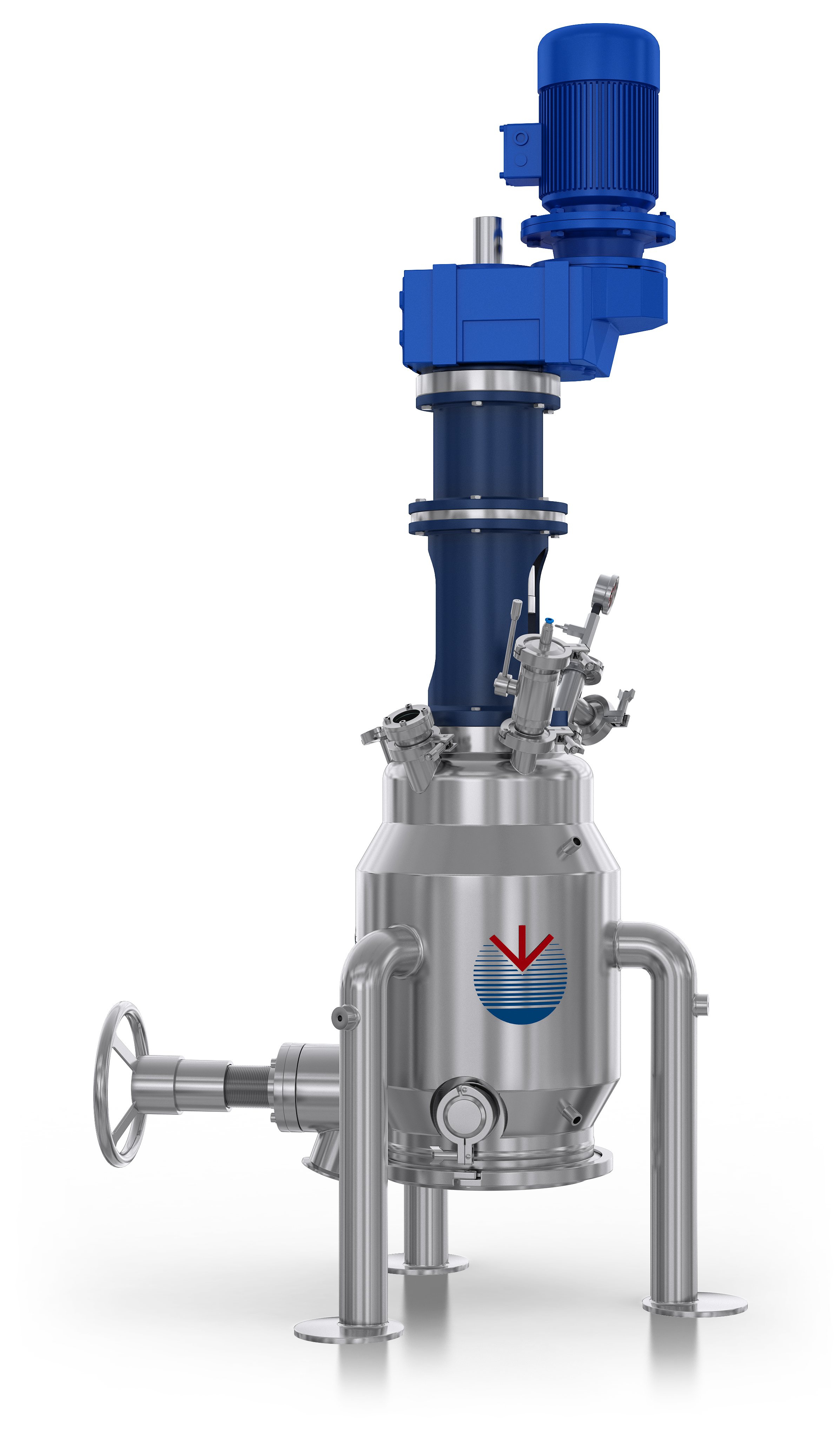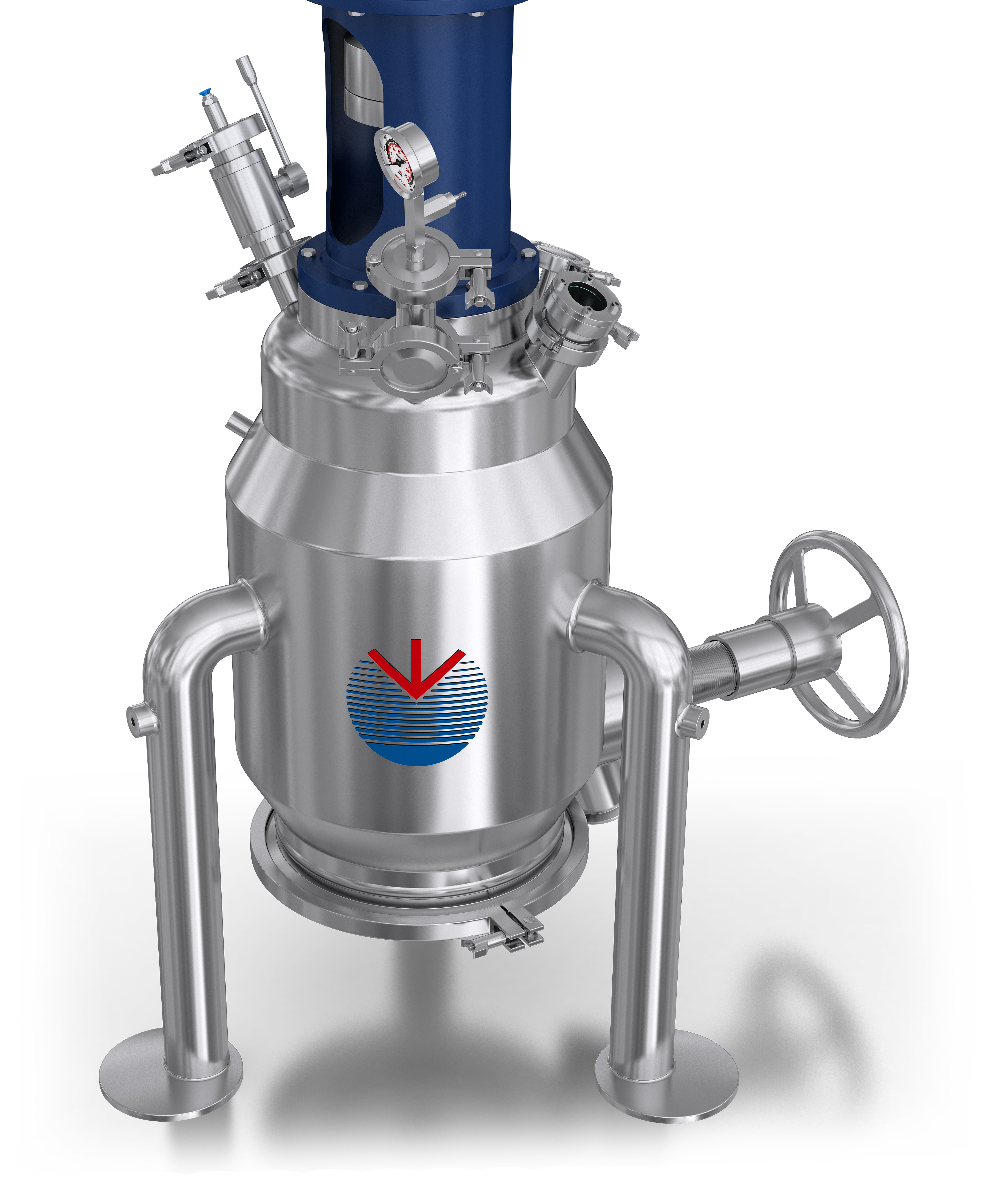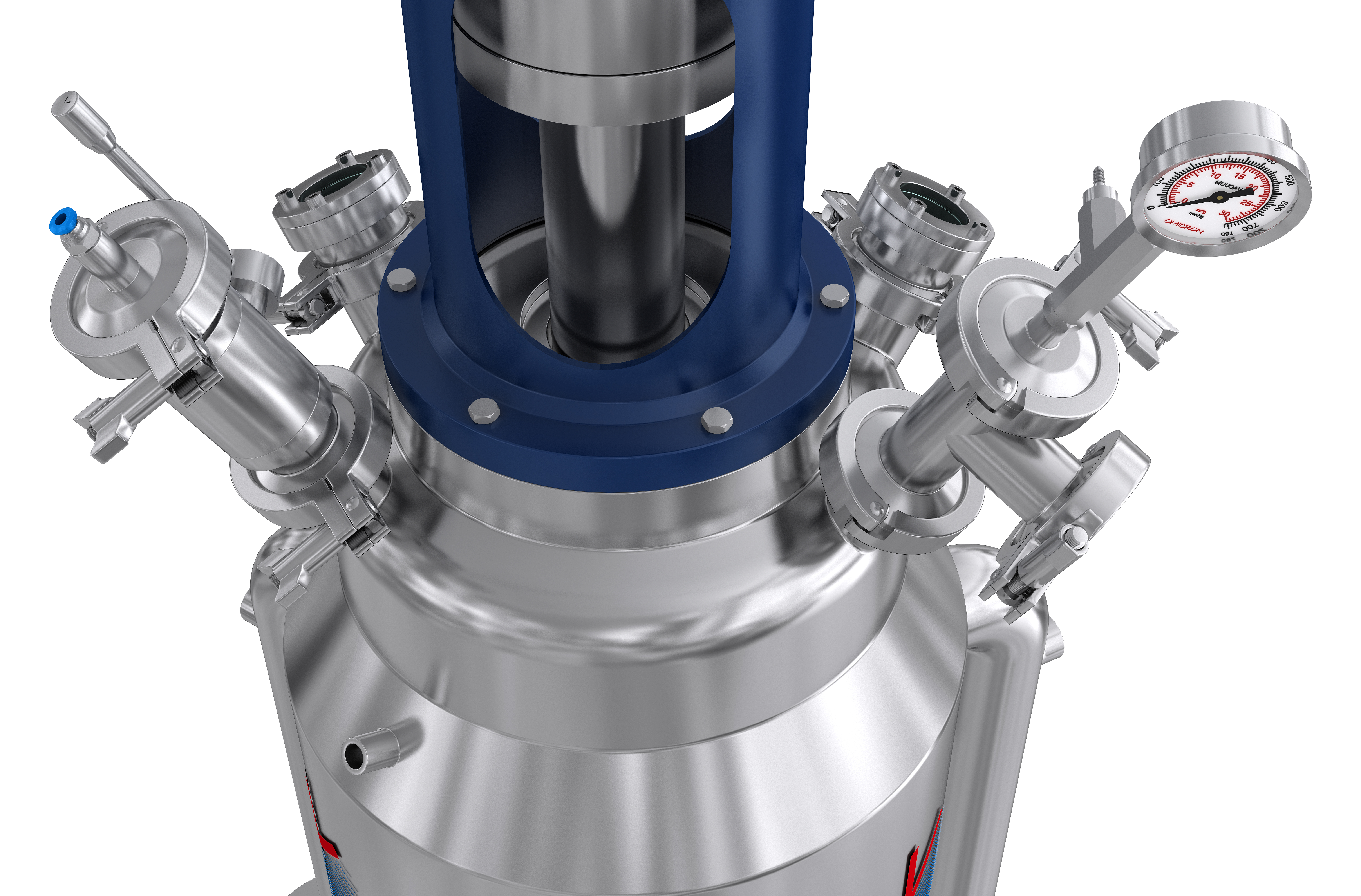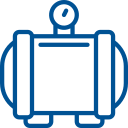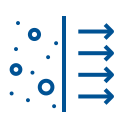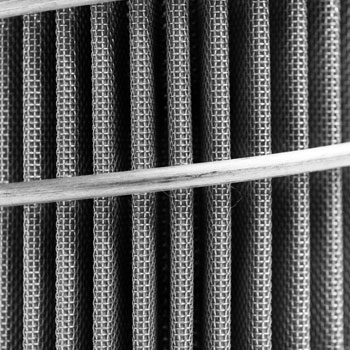This is the initial step of agitated nutsche filter dryer operation, slurry is introduced into the filter, ideally through gravity flow from a reactor positioned above the filter, or alternatively, using a slurry pump. To maintain stability during the process and prevent the filter cloth from ballooning, a pressure balance line is kept open, ensuring smooth and consistent filtration. This setup allows for efficient transfer of the slurry while protecting the integrity of the filter cloth.
This is the second step of the agitated nutsche filter dryer working principle. As the slurry is charged into the filter, the filtrate begins to pass through the filter cloth by gravity. To improve the filtration rate and prevent initial sedimentation on the filter media, the agitator is lowered to its lowest position and rotated in a forward direction. This action helps keep the filter media clean, enabling efficient filtration. The cake height can then be gradually built up in successive steps, ensuring consistent and effective filtration.
This is referred to as the third step of the agitated nutsche filter working principle. During the filtration process, wash liquid is sprayed into the chamber onto the cake through a spray ring. The stirrer blades are then lowered to agitate the slurry, ensuring effective washing of the filter cake. This washing is performed repeatedly, allowing for thorough removal of impurities.
As the filtration process nears completion, the stirrer blades are positioned down onto the cake surface. A specially designed hydraulic system takes over, systematically smoothing out any cracks that may have formed in the cake. This advanced approach reduces residual moisture by 10 to 20% compared to conventional filters, leading to significant energy savings in the drying process—up to 40%.
Following the final wash and compression in agitated nutsche filter dryer working principle, a heating medium is introduced into the limpet or jacket surrounding the shell, as well as into the chamber below the filter plate and the hollow shaft and blades. The stirrer blades are lowered, and the cake mass is agitated during the drying stage. To enhance efficiency, vapor is removed under vacuum through a dust catcher, and additional drying can be achieved by purging hot gas through the cake.
For product discharge, the stirrer blades rotate and are lowered to cut away the upper surface of the filter cake. This process ensures effective removal and facilitates easy handling of the dried product, completing the efficient operation of the agitated filter dryer.

